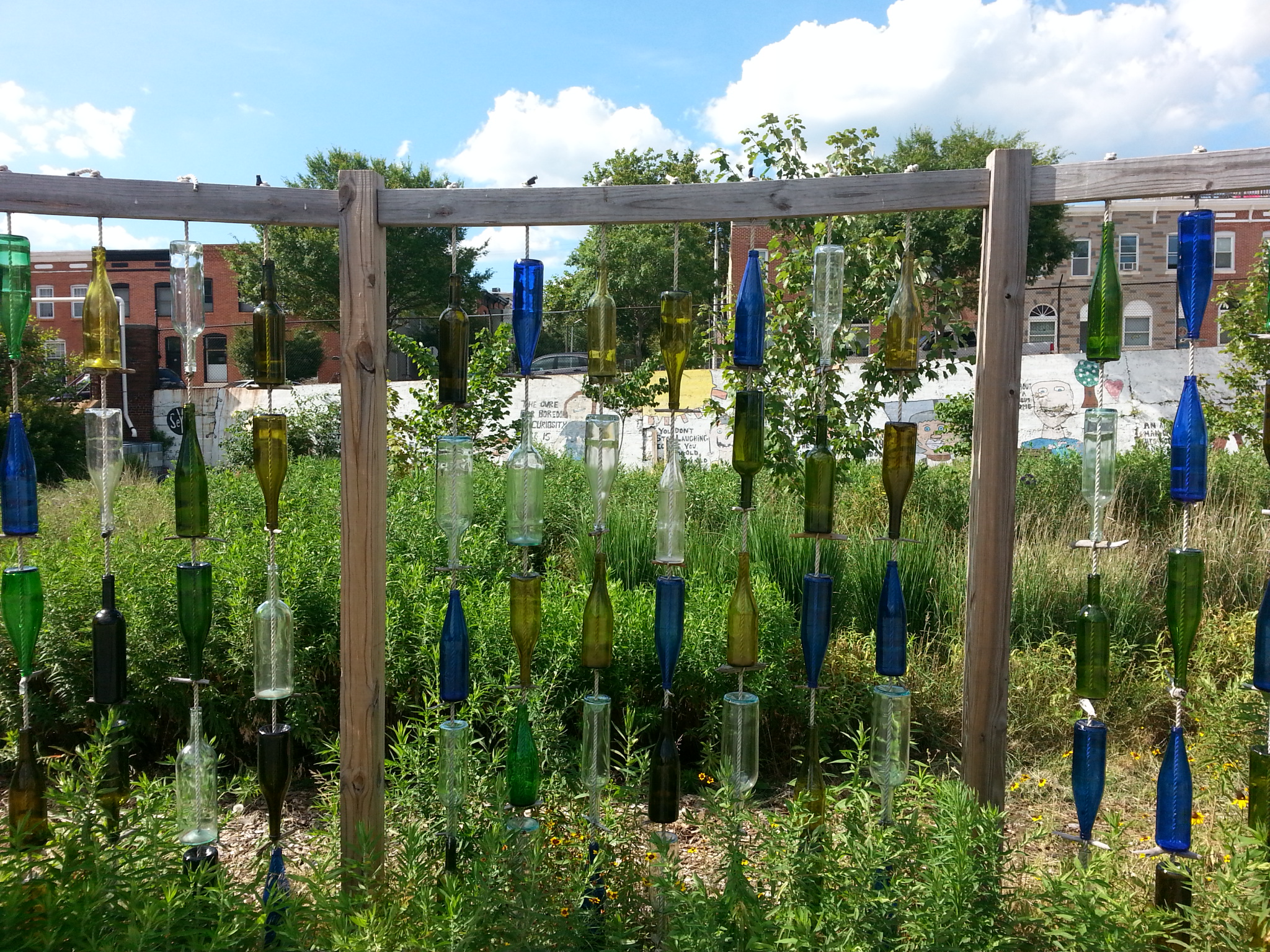Unpaving Paradise in a Parking Lot
Rennie Watson, teacher extraordinaire, shares with us the inspiration and drive to work with Blue Water Baltimore and depave 7,000 square feet of parking in Canton to create a community garden.
Rennie Watson has always had her students digging in environmental science. She is not only a science teacher in Baltimore but also an environmental steward with children. The garden, which just passed its three year anniversary, is an excellent example of what a successful greening effort can look like over the course of a few years. Here is what Rennie had to say:
My favorite description of what my sixth-graders did in their Baltimore City school parking lot is to turn grey into green. The grey is the asphalt and cement that so many young people are surrounded with in the city.
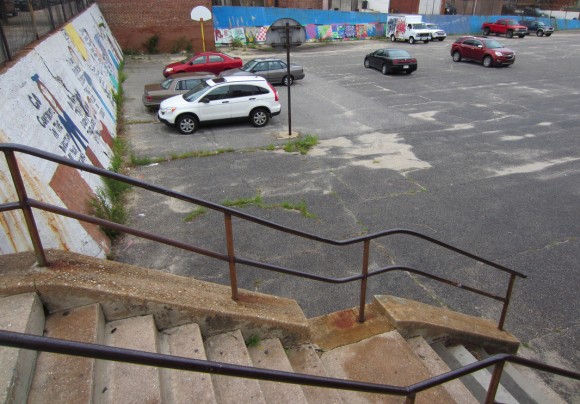
The green is a mammoth garden, a first glimpse for many students of what they could do in their own neighborhoods to improve their communities’ environmental health.
The I Wonder Garden, in the neighborhood of Canton near Highlandtown, emerged from a passion I have for environmental literacy and student engagement combined with a long-standing educator partnership with Blue Water Baltimore.
In 2012, I was in search of a service project for my 6th-graders. Ashley Traut, Blue Water Baltimore Senior Manager for Innovative Stormwater Projects, proposed what became a successful joint grant application to the Chesapeake Bay Trust for replacing an impervious parking lot surface with green space. After many, many months and meetings with community members, school leadership, district leadership, city permitting staff, and students, pavement removal began in the spring of 2013.
“My garden can help the community by being a peaceful place to sit and read.”
—student Antone E.“The purpose of this garden is to be green.”
—student Bre’Asia B.
Students were at the heart of the garden’s creation from the start. With the help of landscape architect Jean Mellott, they researched and brainstormed ideas. The 6th-graders learned about the value of green space in the city and how plants filter stormwater runoff before it enters the harbor.
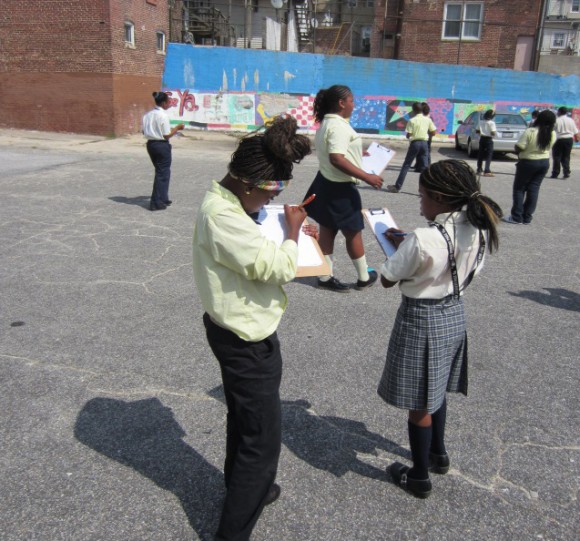
They discovered the value of native plants for providing bird, bee, and butterfly habitat. They investigated its role filtering out greenhouse gases and cooling the environment. Instinctively, my students understood that the garden they created would be a place where people could leave behind stress and find peace. They mapped their ideas on paper to share with the public for feedback.
Then came the time to dig in. Together with the 6th-graders, other students and school staff we planted hundreds of native plants, and spread wood chips along the pathway over the course of several weeks.

At the same time, MICA design student Elise Roy proposed a recycled bottle fence for the garden, that was supported by the Urban Greenspace Fund.
Students and members of the community came out during weekends to assemble the fence, created with hundreds of bottles donated by volunteers and businesses in the neighborhood.
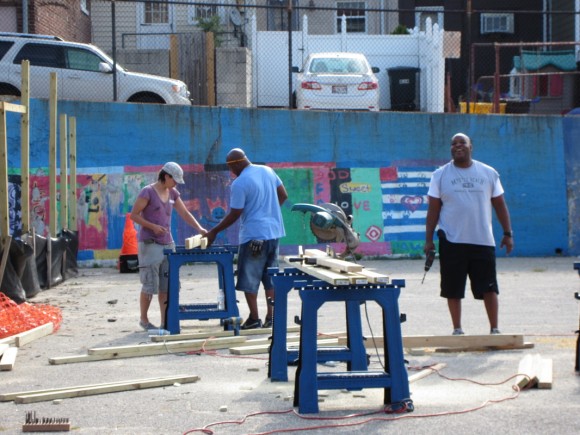
The I Wonder Garden, named after a small city park that existed nearby in the early 1900s, has really earned its name. I wonder how it really came together with so many moving parts. And, I wonder how it continues to thrive, even though the school that supported its creation closed two years ago.
But, more than anything, the garden has people wondering about
nature and what is possible.
Volunteers in the neighborhood and the Canton Community Association continue to support the garden’s growth. They build fences, funded by the Baltimore Community Foundation, and maintain mulch pathways from donated materials. Currently, neighbors are constructing veggie bed borders with materials paid for by donations to GoFundMe.
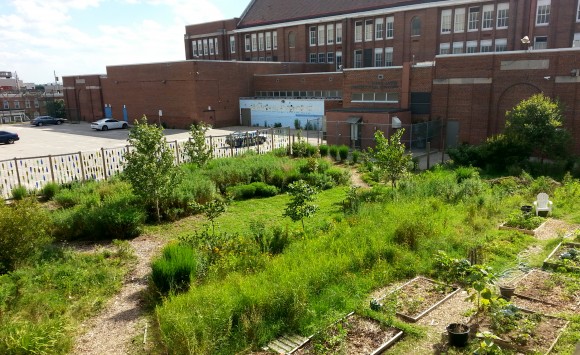
Visitors discover when they read signs around the I Wonder Garden that it now is an official Audubon Bird-Friendly Habitat and part of the Rain Gardens for the Bay campaign.
The hundreds of plants that replaced 7,000 square feet of impervious surface now filter about 130,000 gallons of stormwater each year before it reaches Baltimore Harbor.
Moreover, the garden removes greenhouse gas pollution from the air and offsets the urban heat island effect.

This little piece of green works hard to make the surrounding urban environment healthier. Hopefully, all the students who worked on and in the garden, as well as neighbors and supporters, now see what a difference they can make, turning grey into green.
Learn more about the I Wonder Garden and the many Volunteers that made it happen. The garden is located in the parking lot at 801 S. Highland Ave. All photographs provided by Rennie Watson and Ashley Traut.

